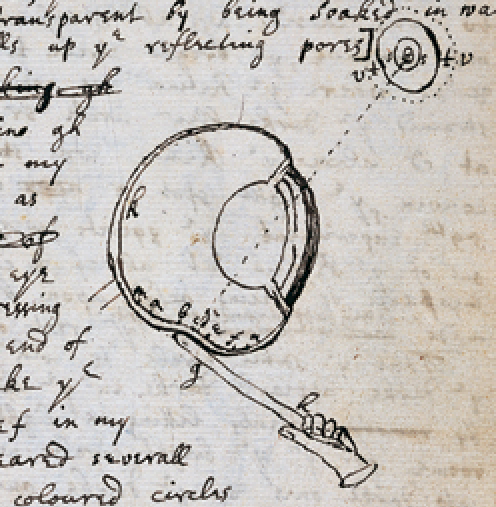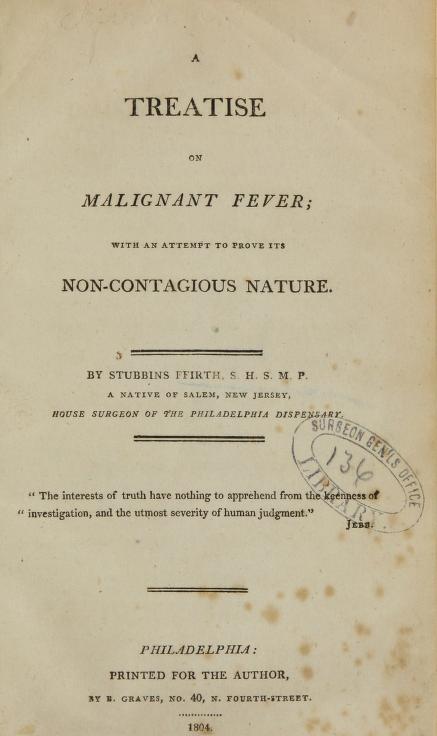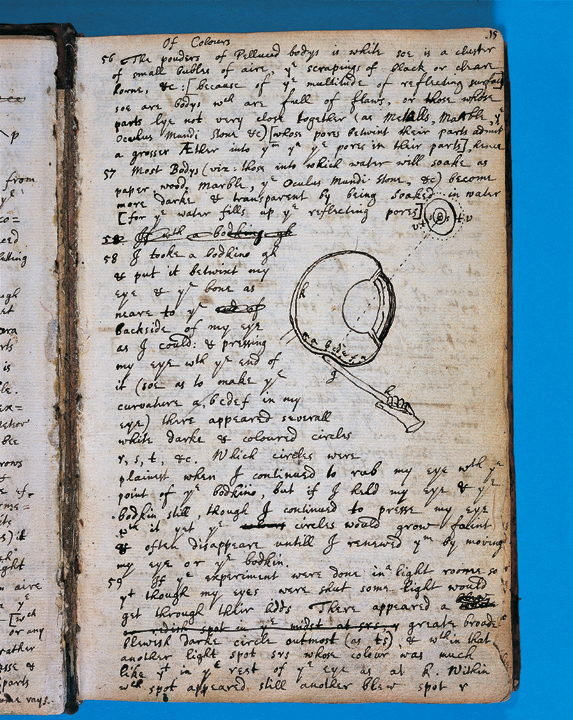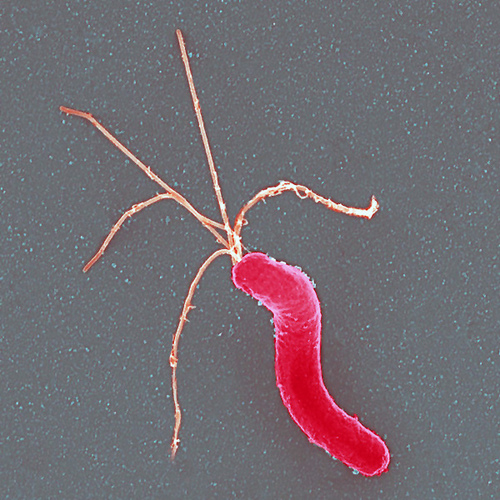Being your own Guinea Pig
 Saturday, November 9, 2013 at 05:58AM
Saturday, November 9, 2013 at 05:58AM  Science is a methodical approach to gathering knowledge. It is systematic and controlled, but don’t for a moment imagine that this means that basic curiosity is lost. Scientists are a very inquisitive lot. Throughout history there are examples of when they have turned to themselves for experimentation. Sometimes this has been through frustration, sometimes through impatience, sometimes to make a point. In any case there are some great (and at times disturbing) stories to tell. Here are 10 of my favourites.
Science is a methodical approach to gathering knowledge. It is systematic and controlled, but don’t for a moment imagine that this means that basic curiosity is lost. Scientists are a very inquisitive lot. Throughout history there are examples of when they have turned to themselves for experimentation. Sometimes this has been through frustration, sometimes through impatience, sometimes to make a point. In any case there are some great (and at times disturbing) stories to tell. Here are 10 of my favourites.
1. Black, yellow and totally disgusting
Stubbins Ffirth’s interest in yellow fever was prompted by an epidemic in his hometown of Pennsylvania when he was young. The outbreak saw the demise of 10% of the population. Ffirth was pretty confident that yellow fever could not be transmitted from human to human and as a medical student, set out to prove this. Yellow fever can be a particularly nasty disease. In the worst cases, bleeding in the mouth and gastrointestinal tract causes the sufferer's vomit to appear black and it was this blak vomit that Ffirth began working with.
 “I took [the vomit] internally from half an ounce to 2 ounces, drinking it without dilution . . . had the balk vomit been possessed of any active or deleterious property . . . how is it possible that I should never have the least effect produced?”
“I took [the vomit] internally from half an ounce to 2 ounces, drinking it without dilution . . . had the balk vomit been possessed of any active or deleterious property . . . how is it possible that I should never have the least effect produced?”
It's worth reading his thesis if only for the lovely turn of phrase. They don’t write theses like that any more.
As it happens, Ffirth was close, but not quite right. Decades later work by Carlos Finlay and then Jesse Lazear showed that yellow fever can be transmitted from human to human, but only when the disease is introduced directly into the bloodstream (it seems that Ffirths attempts to acheive this, were with old bodily fluids that were no longer able to carry the infection). Usually trasmisson is by mosquito. As an aside, Lazear had also been secretly testing the theory by having mosquitos bite him (although the one that carried the yellow fever that eventually killed him, might have been a wild mosquito).
2. Proving the safety of myxomatosis
In 1951, shortly after CSIRO released myomatosis to try to reduce feral rabbit populations, there was a coincidental outbreak of human encephalitis. With some poor media reporting (surprise), people started to link the two and something of a public panic began. In order to calm these erroneous fears and demonstrate that the myxoma virus held no disease risks for humans, Frank Fenner (great Australian virologist, who – among other things - played a vital role in the eradication of smallpox), Frank MacFarlane Burnett (virologist who was awarded a Nobel prize in 1960 for predicting acquired immune tolerance) and Ian Clunies Ross (parisitologist and then Chairman of CSIRO) did something impressive. In an act that today would lead every current affairs program, they injected themselves with enough myxoma virus to kill hundreds of rabbits. They were fine and their survival was triumphantly announced in Parliament by the Minster for Science.
3. Eyes of the beholders
Isaac Newton is one of the mot celebrated experimenters is history. He was a man of great curiosity and not even his own comfort would get in the way of that. At one point he carefully inserted long bodkin needle into his eye socket until it was deep enough for him to push and deform his eye ball. This was to try to better understand the way we perceive light and colour.
Decades later, Thomas Young undertook similar self-experimentation, to test whether the focusing ability of the human eye was achieved by a lens on the from of the eye or some change of the actual shape of the eye ball. Young inserted a hook down the side of his eye socket till it could rest against the back of his eye ball. He altered his focus, the hook did not move, indicating that there was no change to the shape of the eyeball. Young’s insights led him to become the first person to describe astigmatism.
4. Extreme daylight saving
Sleep is fascinating. Nathaniel Kleitman was interested in how hard wired our diurnal sleep patterns and circadian rhythms were, so in 1938 he and his assistant Bruce Richardson spent 28 days in a cave in pitch darkness to see of they could adapt to a 28-hour day. Kleitman struggled, but Richardson was successful.
5. Have a good trip.
Albert Hoffmann could have easily studied humanities or become an artist, but there was something alluring about discovering new things that drew him into chemistry. As a chemist at Sandoz in Basel (Switzerland) he was exploring pharmaceutical opportunities (what we'd probably call drug discovery today), mainly with regard to respiratory and circulation stimulants. During this work he was the first person to synthesize lysergic acid diethylamide, better known as LSD. One day he accidently absorbed some through his fingertips and experienced the first LSD trip. He described a “not unpleasant intoxicated-like condition, characterized by an extremely stimulated imagination . . . an uninterrupted stream of fantastic pictures, extraordinary shapes with intense, kaleidoscopic play of colours”. That was an accident, but three days later he deliberately took 250mg of LSD. As the effects started to kick in, Hoffmann got on his bike and rode home. Despite some slightly freaky experiences, Hoffmann continued to argue for the potential benefits of FSD as a treatment for various psychological conditions (and he lived to be 102).
6. I told you I was ill
Stomach ulcers can be very serious. They can cause very nasty internal bleeding and in extreme cases even death. For generations it was common knowledge that stomach ulcers (also known as peptic ulcers) were caused by stress. The only problem with his is that they aren’t. Stress can be an exacerbating factor, but in most cases, peptic ulcers are caused by bacteria. This was observed by Robin Warren a pathologist at Royal Perth hospital when he found patients whose stomachs were riddled with Helicobacter pylori. Warren began working with another doctor at the hospital, Barry Marshall. The two hypothesised that bacteria caused stomach ulcers, but it wasn’t easy to prove. They tried working with mice and pigs, but it turns out H. pylori only affects primates.
 Helicobacter pylori, image by AJ Cann.They were not allowed to set up a proper human trial, so Marshall undertook a trial on himself. He ingested a petri dish of H. pylori, assuming it would lead to ulcers at some point. It did, and very quickly. Within a few days, Marshall had developed gastritis and pretty stinky breath. This was accompanied by nausea and lethargy. A biopsy revealed a happy colony of H. pylori. After a course of antibiotics, this cleared up. For this work, Marshall and Warren were awarded the 2005 Novel Prize for Physiology or Medicine. Our improved understanding of the processes involved in the development of peptic ulcers has led to a greatly improved treatment and also a much reduced incidence of stomach cancer (at least in the western world).
Helicobacter pylori, image by AJ Cann.They were not allowed to set up a proper human trial, so Marshall undertook a trial on himself. He ingested a petri dish of H. pylori, assuming it would lead to ulcers at some point. It did, and very quickly. Within a few days, Marshall had developed gastritis and pretty stinky breath. This was accompanied by nausea and lethargy. A biopsy revealed a happy colony of H. pylori. After a course of antibiotics, this cleared up. For this work, Marshall and Warren were awarded the 2005 Novel Prize for Physiology or Medicine. Our improved understanding of the processes involved in the development of peptic ulcers has led to a greatly improved treatment and also a much reduced incidence of stomach cancer (at least in the western world).
7. Santorio Santorio
In the early 17th century, Santorio Santorio (also known as Sanctorius Sanctorius and other similar names) was a physician and Chair of Theoretical Medicine at the University of Padua. At this time, the understanding of nature and medicine was based largely on a qualitative understanding of things – the essence of things. Medical treatments were often about restoring the balance of the natural “humors”.
Santorio (I hope it’s ok to use just one of his names) started investigating and describing things from a more mechanical approach, with a greater emphasis on measurement. Santorio set out to answer a classic child’s question – what happens to my food after I eat it? Observant kids note that what they eat appears to be rather more than what ends up in the toilet. Santorio set up a very large balance system with a chair at one end. Using this apparatus, he weighed his food intake and his weight after excretion. He did this for about thirty years. To explain the difference between what he ate and what he excreted, Santorio developed his theory of insensible perspiration. We now have a much better understanding of the metabolic and biochemical systems that are at play, but Santorio’s work helped move medical research in a much more evidence-based direction.
8. Do you hear something?
In 1993, Dr Robert Lopez, a New York vet, was treating a cat with a nasty infestation of mites. The cat’s owner’s daughter had also complained of being itchy. Lopez also heard that after treatment when the cat’s infestation was gone the girls itching also cease, and he wondered if ear mites could or would move from cats to humans. Apparently the next logical step was to insert some ear mites from a cat into his own ear. He actually did this on a few occasions and in a paper published in the Journal of the American Veterinary Medical Association, he describes how he heard scratching sounds that became louder as they days went by and the mites moved deeper into his ear canal. He suffered intense itching to the point where he was unable to sleep. In 2007 Lopez received an Ig Nobel Award for his research. I’ve been flinching and itching just writing this.
9. Charles Babbage
Another great thinker and experimenter, Babbage is credited with designing the first programmable computer (with programming by mathematician Ada Lovelace) – in 1822. The most advanced of these machines were not completely built during Babbage’s lifetime, but a reconstruction in 1991 (using Babbage’s original specifications and engineering available the time he designed the machine) worked perfectly well. It seems like Babbage might have been a pretty humourless chap (he headed up an anti hoop-rolling campaign and was vehemently opposed to music in the street, especially that of organ grinders), but he was another of these relentless experimenters. He’s in this list because at one point he was lowered into Mount Vesuvius and at another time, he was placed inside an oven and baked at nearly 130oC for several minutes apparently just to see what it would be like. He claimed not to have suffered any great discomfort.
10. Sleep tight . . .
And then there’s Johnny Fedora, who a few ears ago uploaded a video of him allowing roughly 1000 bed bugs to feast on his arm. Enjoy.

Reader Comments